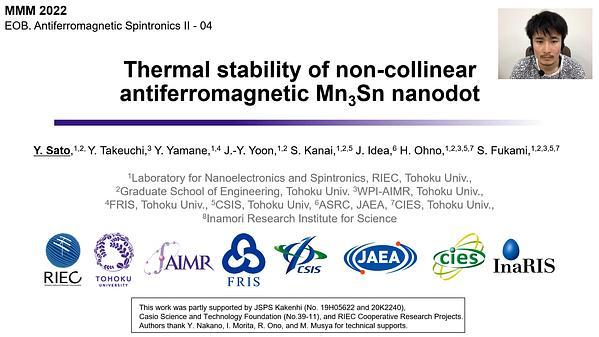
Premium content
Access to this content requires a subscription. You must be a premium user to view this content.

technical paper
Spin Transport in Mg based Nonlocal Spin Valves
Substantial gaps remain in the understanding of spin transport in low-Z nonmagnetic (N) metals, despite their use in spintronic technology. While Elliot-Yafet spin relaxation is known to prevail in such metals, the βi constants that relate spin relaxation times to momentum relaxation times are only known for certain defect types (i), primarily in simple metals like Cu 1 and Al 2. Other low-Z metals with potentially long spin diffusion lengths have been barely explored 3, and their βi remain unknown. In this work we thus explore spin transport in Mg, using nonlocal spin valves (NLSVs). Mg-based NLSVs were deposited by UHV evaporation on Si/SiNx using Al and Ti seed layers. As shown by specular wide-angle X-ray diffraction (Fig. 1(a)) and (0002) pole figures (Fig. 1(b)), strong out-of-plane (0001) texture arises, while in-plane texture (Fig. 1(c)) is negligible. Significantly, the (0001) texture of HCP Mg is significantly stronger with HCP Ti vs. FCC Al seeds (right and left of Figs. 1(b,c)). These Mg films exhibit the lowest residual resistivities (0.99 μΩ cm) and highest residual resistivity ratios (>6) reported for polycrystalline Mg films and nanowires. In NLSVs, the low-temperature spin diffusion length, βphonon, and βdefect reach 550 nm, 28000, and 5300 in Ni80Fe20/Al(5 nm)/Mg(100 nm) NLSVs, compared to 370 nm, 16000, and 1200 in Ni80Fe20/Ti(4 nm)/Mg(100 nm) NLSVs (Fig. 2). We hypothesize that these improvements in spin transport parameters in the Al-seed case arise due to weaker (0001) texture. Specifically, recent spin-hot-spot-based 4 theoretical predictions for HCP Mg predict 2200% higher β for spins injected along the Mg c-axis vs. in the basal plane 5; our results may constitute the first experimental evidence for this highly anisotropic spin relaxation. This work was supported by the NSF.
References
1 J. D. Watts, L. O’Brien, J. S. Jeong et al., Phys. Rev. Mater., Vol. 3, p.124409 (2019). 2 J. D. Watts, J. T. Batley, N. A. Rabideau et al., Phys. Rev. Lett., Vol. 128, p.207201 (2022). 3 H. Idzuchi, Y. Fukuma, L. Wang et al., Appl. Phys. Exp., Vol. 3, p.049202 (2010). 4 J. Fabian and S. Das Sarma, Phys. Rev. Lett., Vol. 81, p.5624 (1998). 5 B. Zimmermann, P. Mavropoulos, N. Long et al., Phys. Rev. B, Vol. 93, p.144403 (2016)


